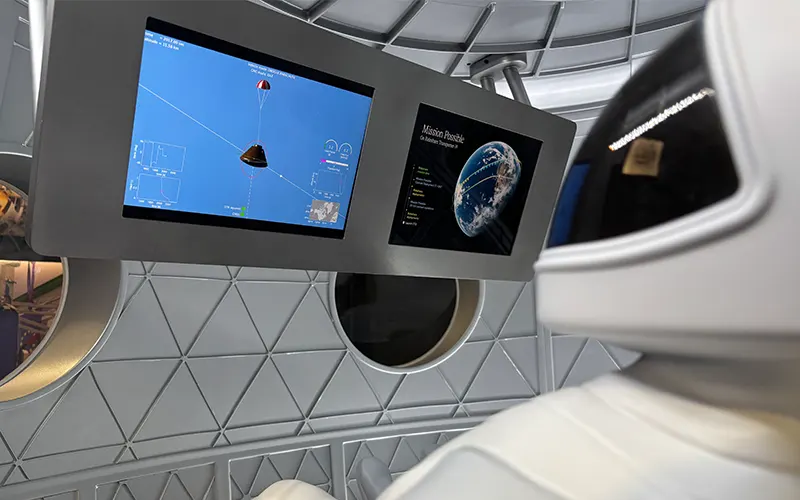 Credit: The Exploration Company
Credit: The Exploration Company
During the first day of the Paris Air Show in Le Bourget, The Exploration Company unveiled a crewed version of its Nyx spacecraft. According to the company, if the political will exists, the proposed crew-rated capsule could be ready for its inaugural flight no earlier than 2035.
The Exploration Company is currently developing the cargo version of its Nyx spacecraft, with an initial mission to the International Space Station planned for 2028. This initial demonstration flight is being funded by the European Space Agency under its LEO Cargo Return Services initiative. As part of the programme, ESA has specified that proposed vehicles must be capable of adaptation for future crewed missions transporting European astronauts to the ISS and other low Earth orbit destinations.
The proposed Nyx Crew vehicle would be capable of ferrying up to five astronauts to and from low Earth orbit. The company has also worked to make the capsule accessible to astronauts with disabilities, an allowance that aligns with ESA’s Parastronaut project. The development of the project will, however, be an endeavour that the company will not be able to pursue alone.
According to a statement from The Exploration Company, the development of a crew-rated spacecraft would cost in the order of €1 billion, an amount that the company says would be difficult to fund through private investors. As a result, the statement continues, it becomes a “political decision” whether Europe wants to build a European crew vehicle for European astronauts. To this end, the statement concludes by urging ESA Member States to make a firm decision on the agency’s human spaceflight ambitions during its Ministerial-Level Council meeting later this year, rather than postponing it for another three years.
The Exploration Company’s Nyx Crew vehicle is not the only crewed capsule being developed by a European space company. In late 2024, Spanish rocket builder PLD Space unveiled its Lince capsule, which it said could be ready for an inaugural test flight as early as 2030. Thales Alenia Space, the second recipient of a contract under ESA’s LEO Cargo Return Services initiative, is also developing a cargo vehicle designed to be adaptable to a crewed variant. However, all three vehicles are likely to remain proposals without significant institutional support.
It Starts with Mission Possible
The Exploration Company is currently preparing to launch its sub-scale Mission Possible demonstrator aboard a SpaceX Falcon 9 later this month. The mission will serve to validate key technologies intended for use aboard Nyx.
The Mission Possible capsule will remain attached to the rocket’s upper stage through its deorbit burn. The capsule will then be deployed to complete the reentry and recovery phases of its mission. It is expected to be recovered from the Pacific by the recovery vessel Makushin Bay, which departed from a harbour in Alaska on 10 June.